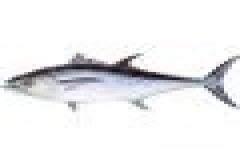The goal of this study is to get more precise information about bluefin tunas migration patterns and spawning areas, in order to supply ICCAT (International Commission for the Conservation of Atlantic Tunas) with detailed stock assessment information and EC with management of resources tools.

Introduction
On one side, tunas are tagged and their route followed thanks to tags transmitted signals (received from the ARGOS satellite).
On the other side, the analysis of oceanographic data (Ocean Colour and Sea Surface Temperature) in the tunas crossed areas gives some hints at correlation between environmental parameters and fish behaviour.
Many studies provided evidence of a deep correlation between several parameters (notably climate, physical and chemical conditions of the marine environment and food-chain processes) and tuna fishes spatial distribution and displacements.
The data collected in the whole study help to determine the bluefin tuna movements in the Mediterranean and Atlantic areas and, simultaneously, explain the migrations according to the variation of environmental parameters.
This study is very impourtant to understand the relationships between biotic and abiotic factors in this species and it is essential to evaluate the reliability of pop-off satellite tags in the study of migration patterns of large pelagic fish.
In this project, Planetek Italia produced Sea Surface Temperature and Ocean Colour Maps for those Mediterranean and Eastern Atlantic areas involved with tuna crossing. The maps feed a Geographical Information System designed to manage satellite determined sea surface temperatures, chlorophyll distribution and data related to the tuna displacements. In the GIS environment, variation of
tuna positions are compared to variation of sea parameters.

Observations of the first oceanographic campains
The operations were carried out on 07 June 1998. The tags have interested two samples that have recorded the temperature of the water 11 and 14 days before the release.
The sensor of temperature on the tag 9118 started transmitting the first signal recorded from ARGOS on 17 June and it has been recording the temperature every 4 hours, while the tag 9119 has effected measures every 6 hours. The sensor records temperature variations between 0 and 35 ° C , the position of the tags after the pop-off is given by the satellite ARGOS with a precision of 1 Km.
The tagging operations continued on 27 July 1998 in the Eastern Atlantic where 9 bluefin tunas were tagged, using the same methodology, in the trap of Barbate in Spain. The tags were programmed to pop up at times ranging from 5 to 300 days.
Temperature Maps
The sidelong image represents the hypothesized tuna migrations pop-off in Sardegna in June. The only certain data are the coordinates of where the tags were pop-off. The migrations marked are on a SST weekly map of the the AVHRR relative to the week of 8 June.
All the data have been fed in a Geographic Information System allowing a complete analysis on the Bluefin Tuna migrations in relation to the sea parameters.







